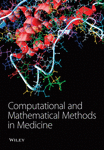Scheduling Chemotherapy: Catch 22 between Cell Kill and Resistance Evolution
Abstract
Dose response curves show that prolonged drug exposure at a low concentration may kill more cells than short exposures at higher drug concentrations, particularly for cell cycle phase specific drugs. Applying drugs at low concentrations for prolonged periods, however, allows cells with partial resistance to evolve higher levels of resistance through stepwise processes such as gene amplification. Models are developed for cell cycle specific (CS) and cell cycle nonspecific (CNS) drugs to identify the schedule of drug application that balances this tradeoff.
The models predict that a CS drug may be applied most effectively by splitting the cumulative dose into many (>40) fractions applied by long-term chemotherapy, while CNS drugs may be better applied in fewer than 10 fractions applied over a shorter term. The model suggests that administering each fraction by continuous infusion may be more effective than giving the drug as a bolus, whether the drug is CS or CNS. In addition, tumors with a low growth fraction or slow rate of cell division are predicted to be controlled more easily with CNS drugs, while those with a high proliferative fraction or fast cell division rate may respond better to CS drugs.




